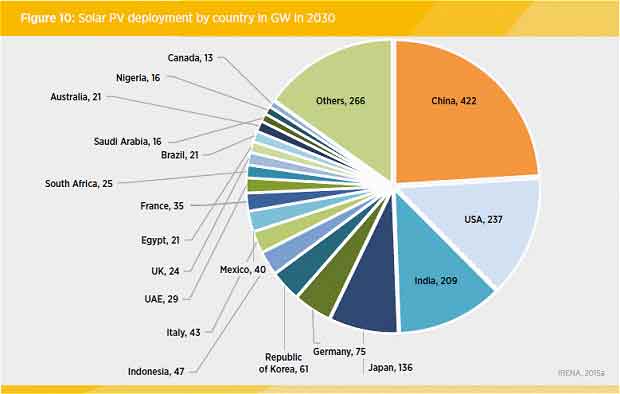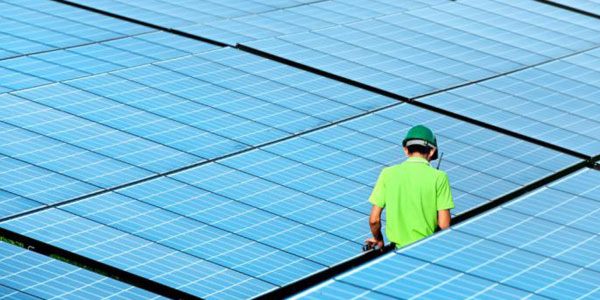The share of electricity generated by solar photovoltaics could be as much as 13 per cent globally in just 14 years says the International Renewable Energy Agency (IRENA).
A new report from IRENA, Letting in the Light: How Solar Photovoltaics Will Revolutionize the Electricity System, estimates solar capacity has the potential to reach as high as 2,500 gigawatts by 2030, up from 227 GW currently.
To reach a 13% share of the global energy mix, average annual capacity additions will need to more than double for the next 14 years.
“World electricity demand is expected to grow by more than 50 per cent by 2030, mostly in developing and emerging economies,” said IRENA Director-General Adnan Z. Amin.
“To meet this demand while also realising global development and sustainability goals, governments must implement policies that enable solar to achieve its full potential.”
The report offers policymakers a series of recommendations that can assist in achieving this increase.
It also highlights falling costs of utility-scale solar electricity generation have been matched by decreases at the household and community level.
“In Australia, Denmark, Germany, Italy, Spain, parts of the United States and many island states, small-scale solar PV systems already produce electricity more cheaply than buying it from the grid.”
In 2030, IRENA expects more than 20 countries will have over 15 GW of PV capacity – including Australia (21GW).

Credit: IRENA. Letting in the Light: How Solar Photovoltaics Will Revolutionize the Electricity System.
The positive impact a significant boost in solar PV could have on avoided carbon dioxide emissions is huge.
“Solar PV is already contributing to greenhouse gas mitigation in the range of 200-300 million tonnes CO2 per year,” states the report. ” Increased solar PV deployment from 200 GW today to 1,600 GW in 2030 will result in greenhouse gas emission reductions of between one and three gigatonnes in 2030.”
A massive push on solar will also create millions more jobs. Of the than 8.1 million+ people around the world already directly employed in renewable energy, the solar PV sector represents the largest number of jobs – 2.8 million globally.
Last year, solar PV represented more than half of all investment in the renewable energy sector and accounted for 20% of all new power generation capacity added in 2015.
















Comments